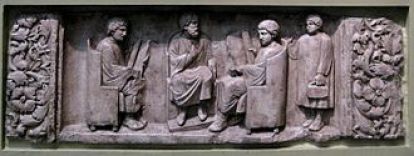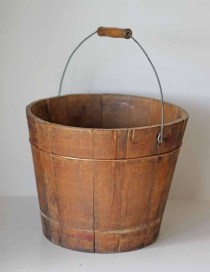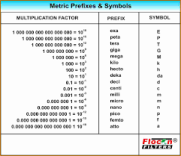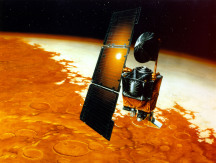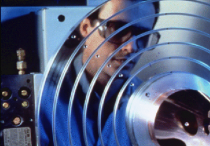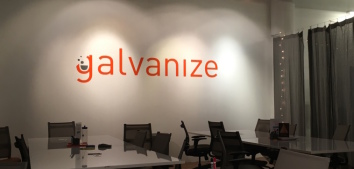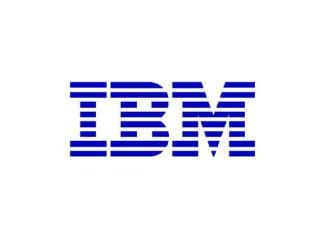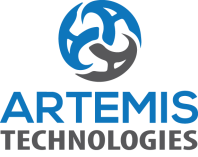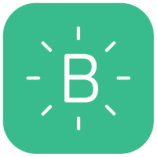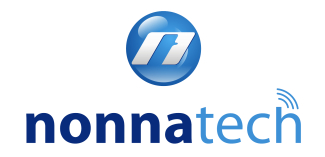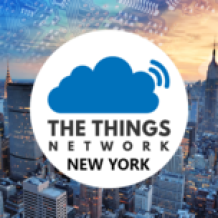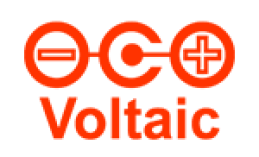
BLOG
Miles Behind in Metric
By Bill Kozel
Quick: How many feet are in a mile? How many ounces are in a gallon? What is 3-7/16 inches times 22-5/32 inches?
If you’re like most Americans, you probably can’t answer without using Google.
It’s not your fault. The United States is one of just three nations – the others being Myanmar and Liberia – who continue to use a measurement system that dates back to the Roman Empire. And it’s damaging our competitiveness in a metric world.
A Crazy Quilt
The so-called “English” or “Imperial” system that we use is a crazy quilt of standards accumulated over the centuries from Roman and Anglo-Saxon cultures. It is partly based on the human body, which gives you some idea of its precision. For instance, one mile is 1,000 paces (LeBron James? Peter Dinklage?), and legend has it that 12 inches was the length of King Henry I’s foot.
Twelves and eights figure heavily in the English system. But in a “base ten” world, twelves and eights require the use of fractions rather than decimals. That is why our measurements are so difficult to multiply and divide.
Drams and Scruples
The English system is full of anachronisms, such as the gallon, which was once the name for a pail. There are pounds, yards, quarts, pecks, bushels, furlongs, grains, drams, and scruples. (Quick: How
many grains in a scruple?) Ounces may be a measure of volume or a measure of weight.
What do you expect from a nation that devised the scoring of tennis matches – in which zero is “love,” one point is 15, two points is 30, and three points is 40? However, even the United Kingdom has largely abandoned the “English” system, using it primarily in road signs, which were deemed to costly to replace all at once.
The International Standard
The metric system, now known as the International Standard of Units, or SI, was developed in the more rational age of the 19th Century and is uniformly based on tens. There are no fractions, only decimals, making it very simple to add, subtract, and multiply. It is ideal for science and commerce.
With the metric system, all you need to remember are the prefixes, which include milli- (0.001), centi- (0.01), deci- (0.1), deca- (10), hecto- (100), and kilo- (1,000).
Distance is measured in meters, volume in liters, weight/mass in grams, and energy in joules.
How many meters in a kilometer? Why, 1,000 of course.
A 145-Year Wait
According to The National Institute of Standards and Technology (NIST), the U.S. was among the 17 signatories to the Convention of the Meter – in 1875. And with impressive swiftness, Congress passed the Federal Metric Conversion Act – in 1975. However, the act only made metrication voluntary. So its greatest result thus far has been that in the late 1970s wine and liquor producers “voluntarily” began listing their products in liters.
So here we are, 145 years later, still driving miles, weighing pounds, counting calories, and buying gallons of milk.
Even NASA, that paragon of science, only transitioned to metric in 2007. In 1999, its confusing use of both systems resulted in the loss of the $327 million Mars Climate Orbiter robotic probe.
Unleashing Competitiveness
Studies have shown that when companies convert to metric, they are more competitive in the global economy. For instance, the U.S. Metric Association reports that manufacturers who go metric experience faster design processes, fewer design errors, a more abundant choice of parts from the international markets – and simply a “fresh look” at design, manufacturing, and the supply chain.
But these are still voluntary initiatives. What’s needed is for Congress to enact legislation making metrication mandatory. (Yes, I am aware that I just used the words “Congress” and “enact” in the same sentence.) Even then, it may take a generation or more to transition.
But we can start today by insisting that our schools teach metric alongside the English system – as it was when I was in junior high school decades ago. Next, we can insist that all product labels and road signs show both English and metric.
Once we’ve succeeded in adopting a system that brings us in step with the rest of the world, perhaps we can actually lead the way in rationalizing our measurement of time, which is also based on twelves.
And maybe, just maybe, someone will tackle music notation, which, being Italian, centers around “C,” ends with “G,” and runs off the staff in both directions – what’s up with that?
Bill Kozel is Creative Director of TechWriters/NYC, which specializes in copywriting services for the technology industry.
IoT CENTRAL’S INTERNET OF THINGS FAIR & NETWORKING BASH
By Bill Kozel, TechWriters/NYC
At the IoT Central NYC Internet of Things Fair & Networking Bash, held at Galvanize in West SoHo, more than 200 guests were treated to an evening of exhibits, networking, and quickly-devoured pizza. The event’s Platinum Sponsor was Microchip Technology Inc., and the Gold Sponsor was IBM. More than 20 IoT-related companies gathered to display their products and services, including:
PLATINUM SPONSOR
Microchip Technology Inc. The Embedded Control Solutions Company®
Microchip Technology Inc. is a leading provider of microcontroller and analog semiconductors, providing low-risk product development, lower total system cost and faster time to market for thousands of diverse customer applications worldwide. Headquartered in Chandler, Arizona, Microchip offers outstanding technical support along with dependable delivery and quality.
Microchip's Quality System is based on the elements and criteria specified by ISO/TS-16949. ISO/TS-16949 is the highest quality system certification mandated by the world's major automotive customers. The specified controls apply to all stages of design and manufacturing.
GOLD SPONSOR
At the IoT Central Winter Bash, John Walicki, Watson IoT Developer Advocate, said, “IBM Watson Internet of Things is delighted to join the IoT Central New York City community. We look forward to running hackathons and meetups with the IoT Central community in 2017.”
Explaining IBM’s role in IoT, Walicki said, “The Watson Internet of Things Platform allows us to send sensor data up to the Bluemix cloud and apply analytics and cognitive capabilities to the data to discover insights. NodeRED is our visual programming language, which allows the developer to take actions based on sensor data.”
You can get started with the Watson IoT Platform on IBM Bluemix at no charge. Find the tools and services you need to create your IoT applications including cognitive APIs, Weather Company data, Blockchain, and more: http://ibm.biz/TryWatsonIoT. And you can reach John Walicki on Twitter at @johnwalicki.
Artemis Technologies empowers the aging in place community through wearable technology, smart sensors, and voice-activated user interaction.
According to Dr. Peter Mitchell, Chief Strategy Officer, “Our goal is to help seniors stay longer in their homes, which is what 90% of people over 55 want to do.”
The Artemis device, Dr. Mitchell said, is, “like the Amazon Echo, only designed for the senior market. It’s a watch, it’s a hub, it’s a wearable. It tracks their calendar, interacts with them on games, produces their grocery list, calls Uber or Dominos, sends medication reminders, and monitors your daily activity. And if you’ve fallen and you can’t get up, it has an immediate alert.”
The name Artemis comes from the Greek goddess of the vulnerable. “We’re going to be the defender, protector, advocate and champion of the elderly,” Dr. Mitchell said.
The company is based in Fairfield, CT, and is currently seeking VC funding as soon as it completes its prototype, expected by February 1, 2017.
Augury connects vibration and ultrasonic sensors to smartphones to detect machine malfunctions before they happen.
Enterprise Account Manager Sean Snyder explained, “We are an industrial IoT company that has developed a hardware/software platform that measures the sounds that rotating equipment makes – such as pumps, fans, and chillers. We have handheld and continuous monitoring solutions and are currently focused on the industrial HVAC market.”
Augury serves large OEMs and services companies in the U.S. and Canada, including Johnson Controls and Trane. The company is based in New York and Israel, and is funded by a number of VC firms.
Blynk is a software platform that allows businesses and developers to incorporate Internet of Things technologies into their products in minutes, no matter which hardware, connectivity type, or peripherals are used.
At IoT Central’s Winter Bash, Pavel Bayborodin, Founder and CEO, said, “Blynk offers a full suite of software tools that are required to prototype, test, and put a ready-to-use connected product into customer’s hands. With Blynk mobile app builder, companies create, brand, and publish native iOS and Android applications for their connected products in a matter of minutes. It’s a drag-‘n’-drop experience to create any interface you need. Our firmware is a thin layer of software that runs on top of your existing embedded application and provides a connection to the Blynk cloud, which is fast, reliable, secure…and open-source.”
The company was funded by Kickstarter and is live since 2015. Over 200,000 developers have already built projects using the Blynk platform, including multiple industrial applications.
Dronesmith Technologies creates a development platform that simplifies communications between drones and the cloud.
Its product, Luci, is the world’s first wirelessly programmable airborne computer, which manages flight operations and enables real-time sensor data collection and machine-to-machine networking. Applications include pipeline inspections, agriculture, and weather forecasting.
Seth Welday, the company’s Developer Evangelist explained, “We make drones into IoT devices, so you can connect them to your existing enterprise solution. They’re a cog in the machine that you don’t have to worry about having pilots for, or doing custom programming for.”
Dronesmith is headquartered in Henderson, NV, and recently demoed at Techstars in New York.
FUSAR stands for the fusion of technology and adventure. The company creates connected mobility products that make your favorite technologies accessible on the go – including an IOT-enabled action camera and handlebar-mounted and wrist-mounted remote controls.
At the IoT Central event, company CEO and Founder Ryan Shearman, said, “If you’re walking down the street and you want to take a photo and share it with your friends, you pull out your smartphone. But the minute you get on your bicycle, motorcycle, or if you’re skiing or snowboarding, that’s nearly impossible without putting yourself at risk of injury.
“We provide a suite of connected devices that allow you to access those same features easily and in a streamlined manner. Everything connects to your phone and connects to the cloud, so you can broadcast your experience in real time.”
Shearman says his products are available online and in a rapidly-growing number of retail stores, including specialty retailers like motorcycle dealerships and ski shops, as well as B&H Photo Video. The company is based in Jersey City and has raised $2.5 million in seed funding.
Hoplite Power provides mobile power where you need it, when you need it.
The company has built a “charge-sharing” network of small-footprint kiosks in bars, restaurants, and cafes around New York City. The kiosks dispense and re-accept rentable, portable battery packs for smartphones. Customers can simply rent, recharge, and return.
Nikolas Schreiber, the company’s Tech Co-Founder, explains, “If you’re low on battery in the New York City, you can go to one of the hubs in our network and rent a battery that has both an Apple and micro-USB cable. Plug it into your phone and take it with you. And when you’re done, drop it off to any hub in the network – similar to Citibike or Redbox. The price is just $3.00 for 24 hours.”
The company’s revenue-share model is appealing to bars and restaurants – as is the fact that Hoplite can build traffic. The company is based in Long Island City, Queens, and is part of the NYDesigns incubator.
HueCore’s smart license plate frame protects your car while parked by keeping parking drivers at a safe distance, sending mobile notifications and reports if an accident occurs.
According to Business Development Manager Julian Middleton, “VARU installs within 15 minutes without wires or special tools to actively protect your car while parked. VARU wirelessly interacts with your vehicle’s alarm system to automatically honk and flash your lights when another driver comes too close. If a collision is detected, VARU records the GPS location, date, time, impact force, as well as license plate of the offending driver. Immediately, a detailed accident report is then sent via mobile notifications to your phone allowing you to decide how to respond to the accident. You can automatically file a police report and/or file an insurance claim straight from our app.”
HueCore is a self-funded, New York City-based technology startup, and will be launching its first product in 2017.
Losant is an IoT solution platform that accelerates developer efficiency by providing a suite of cloud services specifically designed to solve IoT workloads.
Interviewed at IoT Central’s Winter Bash, Brandon Cannaday, Co-Founder and CPO explained, “Losant is a software solution platform for others to use to bring to market their connected solution or IoT product. We provide a foundation layer and our customers build on top of that to solve the common challenges of device connectivity, data management, and workflow in the cloud.”
The company is based in Cincinnati, OH, but has a team in the Techstars incubator in the Flatiron District.
Nonnatech is a platform that utilizes noninvasive sensors and machine learning to reduce hospitalizations.
At the IoT Central Winter Bash, Gary German, Founder and CEO, said, “Our AI platform helps older adults stay out of the hospital by enabling the identification of deteriorating health conditions before the onset of symptoms and allowing for early interventions. Unlike tele-health solutions that use wearable sensors, we use unobtrusive sensors that are placed in the living environment, enabling the passive monitoring of activities of daily living – sleeping, eating, toilet habits, etc. – as well as monitoring for incontinence.”
The company has offices in New York City and White Plains, and is currently seeking a “Seed” round of funding.
Onion makes tiny computers for the IoT market. Launched in December, its Omega 2 product starts at just $5 and combines the small form factor and power-efficiency of the Arduino, with the power and flexibility of the Raspberry Pi.
At the IoT Central Winter Bash, Co-Founder Boken Lin explained, “We make it very affordable to launch an IoT project. Our Omega 2 is a full Linux computer with Wi-Fi built in. It gives you access to the cloud, and is highly expandable.”
Onion Corporation is based in Boston, with R&D offices in Toronto. The company just raised over $600,000 in a Kickstarter campaign, and is now on Indiegogo.
POMCO is a smart, one-touch personal safety device that instantly connects you with the nearest emergency help – anytime, anywhere.
At the IoT Central Winter Bash, Co-founder and Director Lukas Lampe said, “POMCO is a campus security device for students. It’s a small button for your keychain, and if you press the button you’ll be directly connected with campus security via a Bluetooth connection to your phone. Your location and your profile pop up on a screen at the dispatch center, and they can help you appropriately. We’re live on 12 campuses in the U.S., including University of North Alabama, Tennessee State University, and Albright College.”
The company is located in upstate New York, and has an office in New York City.
Reality Analytics enables devices to understand images, sound, acceleration, vibration, and other sensor inputs. The company’s technology is based on patented, advanced artificial intelligence techniques. One of its products, Reality AI for IoT, accelerates product development by spotting the most difficult signatures in the noisiest data. The company is based in New York, with a technology team in Maryland.
At the IoT Central event, Stuart Feffer, PhD, co-founder and CEO explained, “Reality AI is focused on sensors and signals. We have a SaaS-based platform for equipment and device makers to deal with sensing problems. We identify signatures of events and conditions in things like sound, vibration, accelerometry, and certain kinds of imagery. Then, our tools generate code that enables those signatures to be detected again, live. Customers can incorporate our code into their products, either through our cloud service or by exporting the code and integrating it into firmware.”
The platform, Dr. Feffer said, has been live on SaaS since June 2016.
Ritc is an integration platform that enables development of realtime SaaS and IoT. The name stands for “Rules in the Cloud.”
According to Colin Goldberg, Founder and President, “Ritc is positioned as a near-real-time integration platform for SaaS and IoT, and you can actually build applications on it. The idea is that you can have Ritc listening and ingesting streams of events and data and making sense of them. It lives in a microservice environment, and its rules can adapt very easily to future needs.”
The company is based in Mamaroneck, NY, and its application is currently available on Amazon Web Services.
The scriptr.io IoT application development platform offers IoT apps with interoperability to enterprise systems. Scriptr.io is carrier grade, delivered to mobile operators, and supports millions of users and hundreds of apps.
At the IoT Central Winter Bash, Chris Merck, Tech Lead, described a scenario involving city rain gardens: “This is a low power radio (LoRa) based Things Network New York with Scriptr.io-based full stack solution for city rain gardens. We created a very specific IoT ‘smart dirt’ application, but your imagination can take you to other applications. We’ve planted poinsettias here with soil temperature and moisture sensors in the dirt, plugged into Microchip LoRa development boards. We also captured air temperature, humidity, and water temperature. Picture a water source coming from a flat roof. Instead of that good water being wasted in a storm drain, we pipe the water into a garden full of plants to make the city more verdant.”
Scriptr.io and The Things Network NY are based in New York City.
The Things Network New York is a US not-for-profit at the forefront of the effort to bring a free, open-source, decentralized Internet of Things data network called "The Things Network" to the United States. They are developers, innovators, civic-hackers, and entrepreneurs who have organized with the express purpose of providing New York City with free access to a community-owned and community-operated IoT data network. Together with their European colleagues at The Things Network Foundation, they are setting the standard for the Open-Source Smart City through network deployment, hardware development, educational workshops, and community outreach programs.
The network’s near-term goal is to build a data network with complete, redundant coverage of the Five Boroughs designed specifically for smart Things. It is free to access, based on open source software, and owned and operated by its users.
At the IoT Central Winter Bash, Chris Merck, Tech Lead, said, “The Things Network New York provides a radio network that is longer range, costs nothing because it’s crowdsourced, and is open source so you can produce it yourself and not be beholden to anyone. It is sent to the cloud and decrypted, and can easily be integrated with data from many other sources.”
For more details, read the Things Network Wiki. And to get involved, follow them on Twitter @thethingsnyc and join the Meetup Group.
Tech Mahindra represents the connected world, offering consulting, digital transformation, integrated engineering, business services and solutions, enabling enterprise associates and the Society to RiseTM.
According to Eng Hua Yap, Account Director, “In the IoT space, we do end-to-end integration for customers, all the way from device testing, to sensors, to hardware development, to integrating customers to the cloud. We also build various IoT platforms for B2B customers. Globally, we are at launch or proof-of-concept stage on close to 40 IoT projects.”
Tech Mahindra’s U.S. headquarters are in Dallas, TX. Worldwide, the company has over 100,000 employees and approximately $4 billion in revenues.
Voltaic Systems is a portable power company based in Brooklyn. Voltaic produces a diverse line of rugged, high-performance solar products for the consumer market, including solar panels, solar backpacks, batteries, and more. The company is also in the industrial market, providing panels to power remote-sensing environmental and agricultural monitoring systems, as well as GPS trackers.
According to Jeff Crystal, Voltaic’s Chief Operating Officer, “Most small solar panels are made to be very low-cost and cheap. We make panels that will last 10 years outside in very rough environments – whether it’s cold, hot, wet, or saltwater. We use the highest-efficiency cells, and there’s no frame – so we use every square inch of the panel.”
Crystal says the company is 100% self-funded and profitable, and sells its products around the world.

